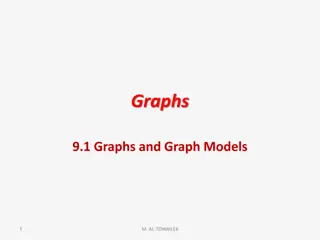Understanding Line Graphs: Year 6 Lesson Overview
This document provides an introduction to interpreting line graphs for Year 6 students. It covers key concepts, reviews essential skills, explores precise mathematical vocabulary, and includes lesson clips on right angles and perpendicular lines. The journey through the lesson involves a focus on perpendicular lines, important numbers in time reading, time representation on a line, line graph features, and interpreting line graphs. The teacher models precise mathematical vocabulary and guides students through developing correct terms. Different strategies, such as asking thought-provoking questions and providing scaffolding support, are used to enhance learning experiences.
Download Presentation

Please find below an Image/Link to download the presentation.
The content on the website is provided AS IS for your information and personal use only. It may not be sold, licensed, or shared on other websites without obtaining consent from the author. Download presentation by click this link. If you encounter any issues during the download, it is possible that the publisher has removed the file from their server.
E N D
Presentation Transcript
Interpreting Line Graphs Year 6
Introduction This document contains: an introduction to the lesson points to consider as you watch each video clip.
Introduction The lesson reviews and builds the skills the understanding necessary to read and interpret line graphs. The teacher describes the learning journey as small/microscopic steps.
The journey through the lesson Review of perpendicular lines Review of important numbers involved in reading time Review of time represented on a time line Consideration of the features of line graphs Reading and interpreting line graphs, using the skills explored during the lesson
Precise mathematical vocabulary Notice throughout the lesson how the teacher models precise mathematical vocabulary and the children s developing use of correct mathematical terms.
Interpreting Line Graphs Right angles and perpendicular lines Year 6 Lesson Clip 1
Right angles, what are they? Consider how this questions provides the children with the opportunity to recall previous learning and talk together, using mathematical vocabulary.
Which are right angles? Consider the importance of presenting the angles in a variety of orientations. This is an aspect of variation. Also note ideally the angles should be marked. The assumption in the lesson was that the focus was the interior angles
The why question The teacher asks: Why are they the odd ones out? Asking why is an important aspect of teaching for mastery, it engages children in a deeper level of thinking.
Scaffolding and support Consider how the teacher supports the learning of individual children to enable them to keep up with the pace of learning in the lesson. Another strategy used by the teacher is same day intervention, which happens after the lesson, but before the next lesson.
Interpreting Line Graphs Key numbers within the context of time Year 6 Lesson Clip 2
True or false activities The children identify which numbers are important within the context of time using a true or false activity. True or false activities are a useful tool in teaching for mastery as they focus on analysing and thinking about the mathematics, providing the opportunity to go deeper. Consider how you might integrate true or false activities into your teaching.
The why question Notice that this question is asked again, and indeed is common throughout the lesson, providing the opportunity for the children to think more deeply about the mathematics.
Interpreting Line Graphs Exploring a timeline Year 6 Lesson Clip 3
True or False? This time the true/false activity is focused on whether the time marked on each time line is correct. Notice the carefully chosen numbers that the teacher uses. Within the context of teaching for mastery, the questions are designed with care to maximise learning.
Peer Support Notice how the children support each other. This is particularly important in this Year 6 class at this time, due to the wide range of prior attainment. Notice how the children have become particularly skilled at not just telling their partner the answer, but instead scaffolding learning through explanation and questioning.
The Challenge Questions Notice how there are challenge questions that provide sufficient challenge for all.
Interpreting Line Graphs Introduction to Line Graphs Year 6 Lesson Clip 4
Interactive Teaching Notice how the teacher involves children in discussion and contributing ideas, whist at the same time providing sufficient support and scaffold to move the learning forward.
Whole Class Discussion Having looked at, compared, and begun to draw out some features of line graphs, the next small step is to look at a graph together where the teacher uses questioning to draw out the key features of a line graph.
Have I done it correctly? Noticehow the teacher s deliberate errors and true/false questions highlight key skills required in reading line graphs.
Pupil Commentator Notice that a child demonstrates on the white board whilst another child commentates and explains what he is doing. This can be a useful technique to hand over responsibilities to the children. In China they call this the little teacher.
Interpreting Line Graphs Independent work on line graphs Year 6 Lesson Clip 5
Peer Support Notice how the children reason and support each other. In teaching for mastery, fostering this type of behaviour is important and it is developed through a continuous diet of: Asking the children to reason and explain Carefully designed questions and activities which prompt the children to think more deeply.
Interpreting Line Graphs Reflecting on the lesson Year 6 Lesson Clip 6
Reflection In the class children s reflection on and identification of key points of learning are regular and important activities. The potential benefits are: Clarification of key points of learning to take forward into the next lesson Provision of assessment information for the teacher. Consider how such reflections might support pupils learning.























